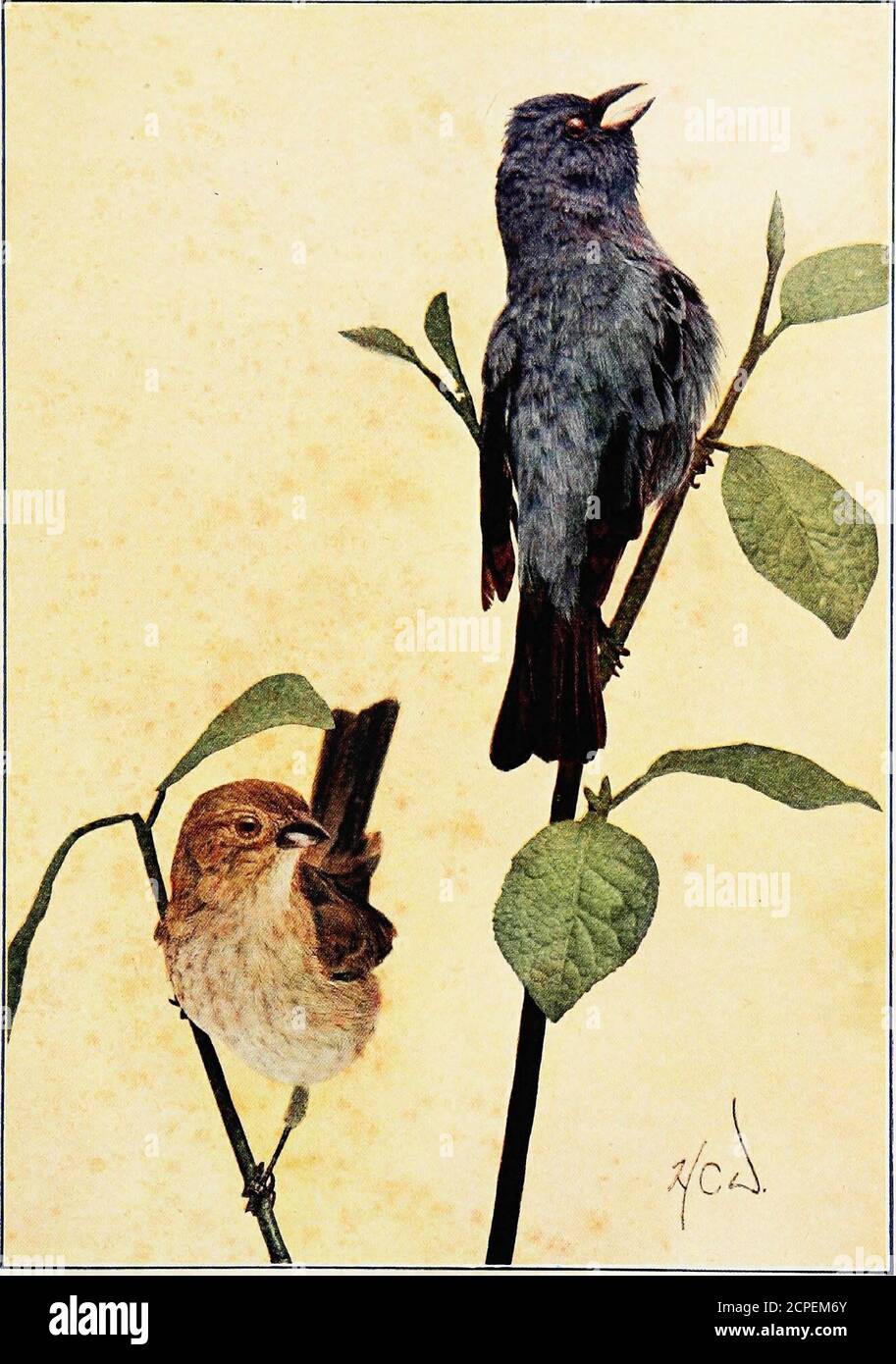. Bird neighbors. An introductory acquaintance with one hundred and fifty birds commonly found in the gardens, meadows, and woods about our homes . most black; they come into their splendid heritage of color bydegrees, lest their young heads might be turned. It is only asthey spread their tiny wings for their first flight from the nestthat we can see a few blue feathers. With the first coo! days of autumn the bluebirds collect inflocks, often associating with orioles and kingbirds in sheltered,sunny places where insects are still plentiful. Their steady, undu-lating flight now becomes erratic

Image details
Contributor:
Reading Room 2020 / Alamy Stock PhotoImage ID:
2CPEM6YFile size:
7.1 MB (411.3 KB Compressed download)Releases:
Model - no | Property - noDo I need a release?Dimensions:
1325 x 1886 px | 22.4 x 31.9 cm | 8.8 x 12.6 inches | 150dpiMore information:
This image could have imperfections as it’s either historical or reportage.
. Bird neighbors. An introductory acquaintance with one hundred and fifty birds commonly found in the gardens, meadows, and woods about our homes . most black; they come into their splendid heritage of color bydegrees, lest their young heads might be turned. It is only asthey spread their tiny wings for their first flight from the nestthat we can see a few blue feathers. With the first coo! days of autumn the bluebirds collect inflocks, often associating with orioles and kingbirds in sheltered, sunny places where insects are still plentiful. Their steady, undu-lating flight now becomes erratic as they take food on the wing-^a habit that they may have learned by association with the king-birds, for they have also adopted the habit of perching upon someconspicuous lookout and then suddenly launching out into theair for a passing fly and returning to their perch. Long after theirassociates have gone southward, they linger like the last leaves onthe tree. It is indeed good-bye to summer when the blue-birds withdraw their touch of brightness from the dreary Novem-ber landscape. The bluebirds from Canada and the northern portions of New. INDIGO BIRD. Male and Female Blue and Bluish England and New York migrate into Virginia and the Carolinas;the birds from the Middle States move down into the Gulf Statesto pass the winter. It was there that countless numbers werecut off by the severe winter of 1894-95, which was so severe inthat section. Indigo Bunting (Passerina cyanea) Finch family Called also: INDIGO BIRD •Length—5.5 to 6 inches. Smaller than the English sparrow, orthe size of a canary. Male—In certain lights rich blue, deepest on head. In anotherlight the blue feathers show verdigris tints. Wings, tail, andlower back with brownish wash, most prominent in autumnplumage. Quills of wings and tail deep blue, margined withlight. Female—Plain sienna-brown above. Yellowish on breast and shading to white underneath, and indistinctly streaked. Wings and tail darkest, so